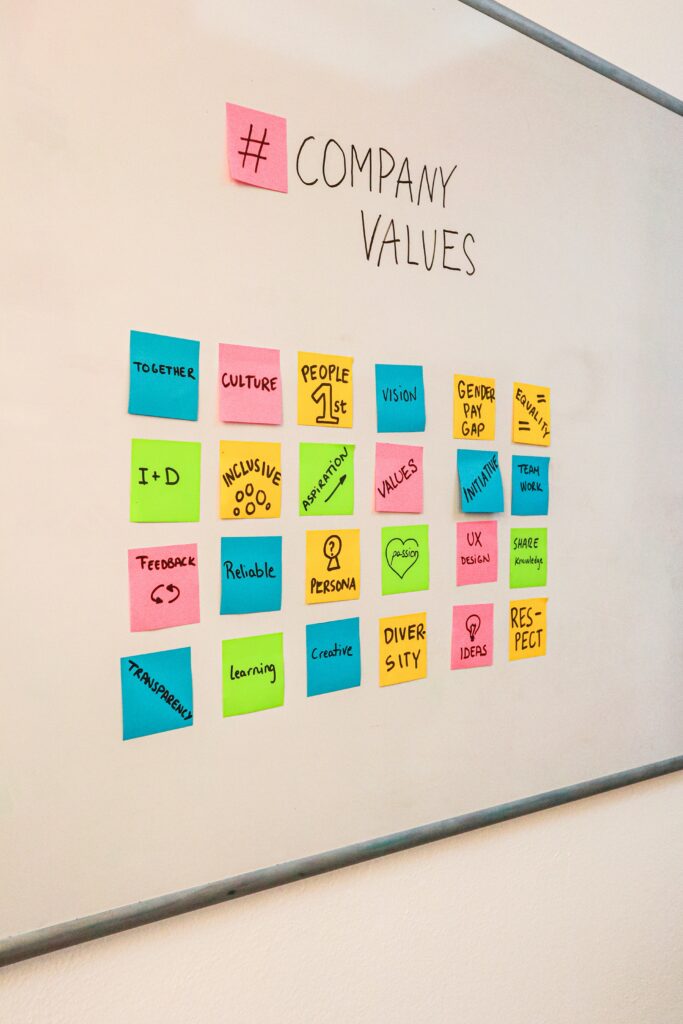Your team has taken the major step of investing in an English language training program. As a team leader, your focus will be the efficacy of the program on every level. From cost savings to team morale, tailoring the learning approach for your employees has many benefits. Here are six ways to personalize corporate language training, so your team will get the most out of this training and development investment.
1. Using assessment to develop individual short- and long-term goals
As any successful program manager knows, the key to meeting goals and metrics is starting with an effective initial assessment to create starting, measurable data points. When it comes to English language training, assessments are used as a baseline to determine the initial fluency of every learner. A quality assessment will test the main four areas of language learning: reading, writing, speaking, and listening.
Bridge language assessments, Linguaskill, Versant, PTE, and TOEIC, are used to assess proficiency for Business English skills as well as general and academic English assessments. To interpret test results, the GSE is used as a common framework from which to measure learner progress on a local, national, or international level to identify areas for focus and create appropriate lesson content.
The GSE helps learners identify their current skills, track micro progressions in learning, and identify specific learning objectives. Developing a learning path for each student is a powerful way to ensure that your language trainer can provide the materials, support, and information necessary for every student to meet their specific learning goals.
For example, some short- and long-term goals for Business English students may look like:
- Being able to memorize a company script for customer interactions
- Learning corporate jargon and technical terms in English
- Understanding cultural differences and engaging appropriately with foreign representatives
- Being able to translate documents, manuals, and other written materials into English for wider consumption
Ultimately, the goals for each student depend on their areas of expertise, industry, and learning timeline.

2. Using assessment to develop company-wide goals
Language assessments are excellent tools for macro as well as micro planning within a company. Depending on the size of the company and the overall business goals associated with learning English, the results of ongoing language assessments can drive company-wide goals and track goals progression. These goals can be as broad as improved interactions with customers or clients and increased employee engagement and retention, to tracking language proficiency rates for industry-specific mandated language standards compliance and language certification rates.
Bridge language program solutions begin with needs analyses and consultations to identify company goals and objectives. The language training program is customized to meet the identified needs with a competency-based methodology.
Learn more about why your English language program should align with your company culture.
3. Employing teaching methods specific to individual learner needs
Employees in a company’s language program will have different starting points, learning styles, and experience levels. An effective language trainer will recognize these differences among students and tailor lesson plans, content, and resources accordingly. Generally, language learners will fall into one of the four main categories of learners: Auditory, Visual, Kinesthetic, or Tactile. Here are a few ways trainers can adjust content to meet the learning needs of these groups.
Auditory learners
As the name suggests, auditory learners have excellent listening skills and retain information when content is exchanged in an interactive and conversational way. Instructors can incorporate role play, mock interviews, and group discussions for this kind of language learner.
Visual learners
In contrast to auditory learners, visual learners are better able to comprehend and retain information through sight. Visual learners will benefit tremendously from handouts, study materials, and flashcards. An effective trainer will be prepared with engaging visuals that communicate information clearly for visual learners. Videos, board games, and translation work will keep these learners on top of their language goals.
Kinesthetic learners
Kinesthetic learners are the movers and shakers of a class. This type of learner needs to physically and mentally engage with content to comprehend and retain information. Lessons that are structured but allow for exploration and independent study are great for these students. Interactive activities, group work, and presentations are also good ways to get these high-energy learners to connect with course material.
Tactile learners
These learners are the list makers, project managers, and information hounds. They’ll prefer physical books and materials over online coursework. This group of students will benefit from office hours, the flexibility to work solo or with a group, and lesson outlines to prepare for tests or exams.
No matter the learning style, a good instructor will always use jargon, examples, and authentic content to contextualize lessons to fit the learners’ job-specific tasks.

4. Providing flexible scheduling
As important as English language instruction may be, job duties will often be a priority for employees. A well-rounded language program will be flexible enough to work around employee responsibilities but structured enough to ensure that they meet their learning goals in a timely manner.
Bridge’s language program is delivered through live online English classes with global teachers. The Bridge learning management system includes an online scheduling platform, providing the flexibility needed by working professionals.
Bridge training solutions include private, small group, and immersion instruction options. Learning goals and experience levels may drive course format choices. There are also many ways companies can support employees and help them overcome some of the common challenges of corporate language training. Providing designated time for learning, integrating training into existing L&D initiatives, and providing access to additional learning resources are just a few ways to provide support and increase the effectiveness of the program.
5. Targeting instruction to specific job role requirements
While English proficiency may be the overall goal of a language program, employees will need to apply their skills to job-specific tasks that depend on their industry and role. Employees in the medical industry may need to apply English skills to medical jargon, research, and reports. Similarly, employees in the mining industry may need to apply English skills to engineering jargon, reports, and presentations for prospective clients.
No matter the field, an English language program should provide targeted instruction to meet the needs of specific learners and support overall company goals. Bridge’s Language Performance Indicators (LPI) dashboard provides transparent, real-time tracking of micro and macro goals and learning progression, providing an effective tool to motivate employees and gauge the effectiveness of the learning program.

6. Tailoring instruction to skills that are part of company values/mission
Lastly, an effective language trainer will ensure coursework, goals, and interactions within the class align with the company’s overarching values and mission. Instruction and activities should communicate a company’s core values to employees, providing tangible motivation and improving productivity and job satisfaction.
Practicing the application of core values in job-specific tasks will serve the dual purpose of ensuring employees are aware of company values and practice them in the context of their learning. For example, if collaboration is a core value, instruction may include group projects and discussion activities. English language instruction can be a prime opportunity to reinforce, encourage, and remind employees of a company’s values and mission and improve the reputation of the company as employees apply their skills on the job.
Interested in the time commitment involved in learning a new language? Read From Novice to Native: How Long Does it Take to Learn a Langauge?








